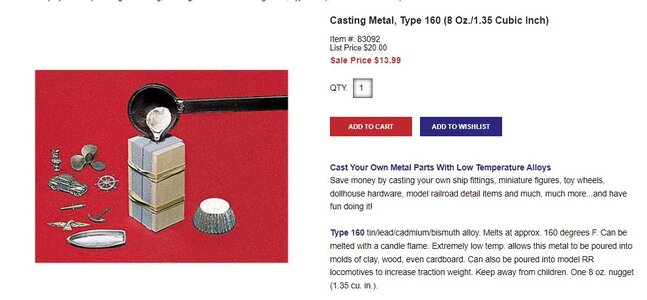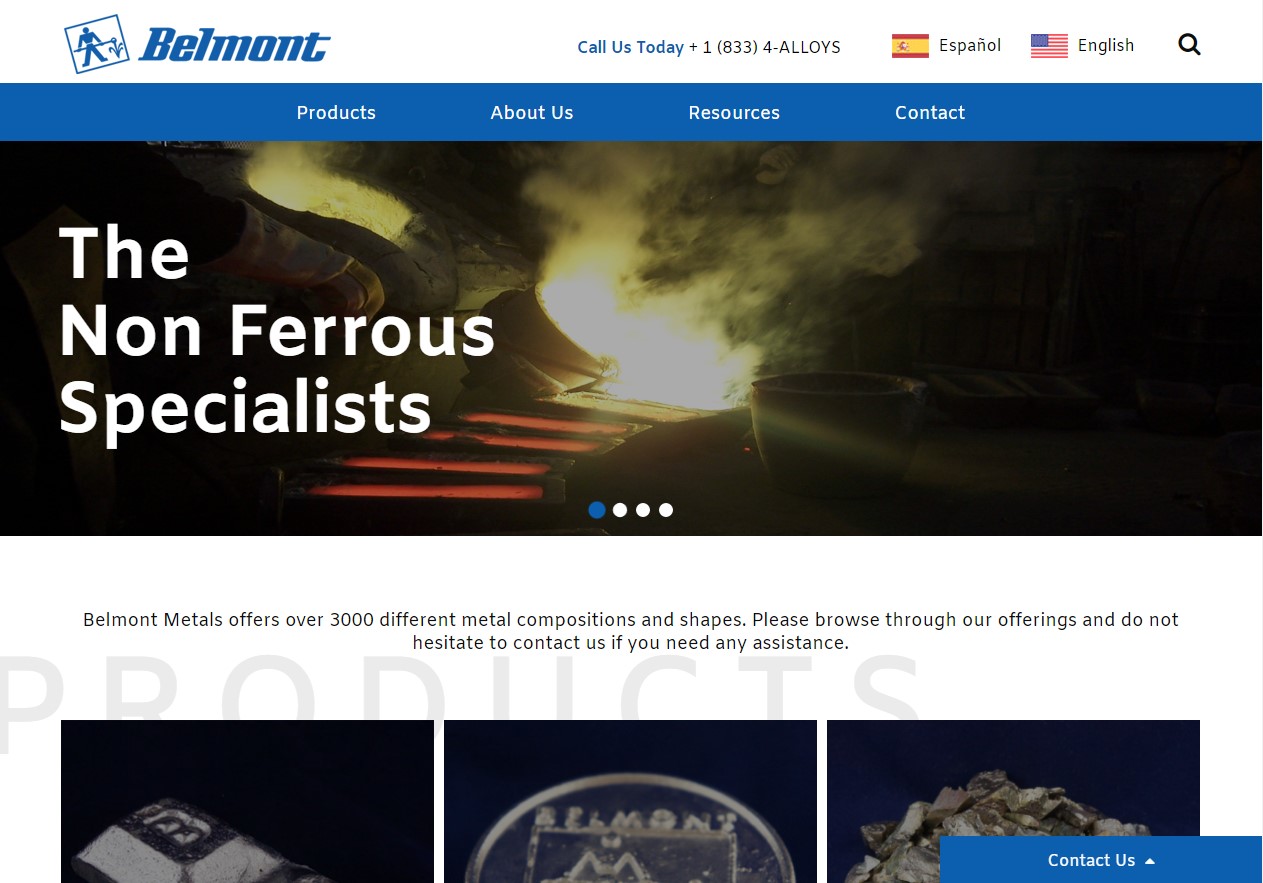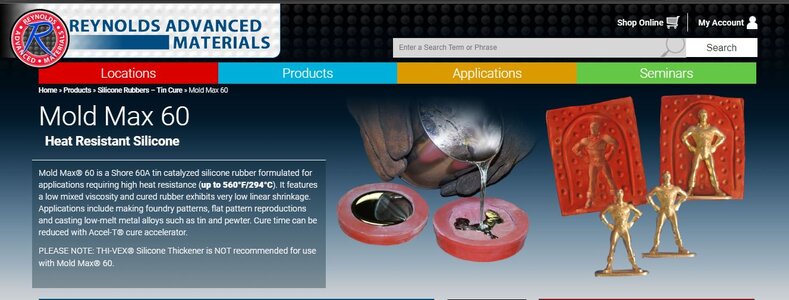Hi everyone,
Can someone share the links for materials for casting of cannons, anchors, etc which they know they work or tried or can recommend? In north america or europe at least.
I think we are looking at a dental alloy based on lead and tin with melting temp around 100-150С (200-300F). For the mold- 2-component silicon compound. I've read about these components on the russian forum but now need to find them here
Can someone share the links for materials for casting of cannons, anchors, etc which they know they work or tried or can recommend? In north america or europe at least.
I think we are looking at a dental alloy based on lead and tin with melting temp around 100-150С (200-300F). For the mold- 2-component silicon compound. I've read about these components on the russian forum but now need to find them here
Last edited:










